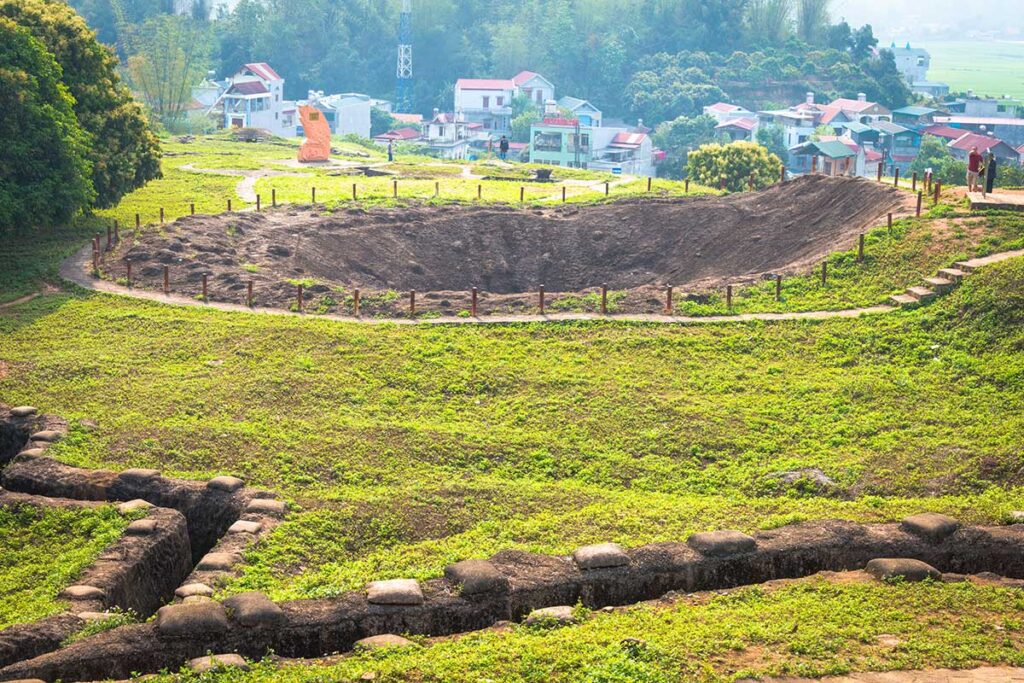History of the Battle of Dien Bien Phu
Before exploring A1 Hill, it’s helpful to understand the broader history behind the battle that made this site so significant.
Vietnam had long been under its own dynastic rule before falling under French colonial control in the late 19th century. After World War II, hopes for independence grew rapidly, and the Viet Minh—led by Ho Chi Minh—began organizing an armed resistance against French forces.
In 1953, the French military established a stronghold in the remote valley of Dien Bien Phu, aiming to lure the Viet Minh into open battle. But the plan backfired. From March to May 1954, Viet Minh troops surrounded the valley, built an extensive network of trenches, and launched a relentless artillery campaign from the surrounding hills.
After 56 days of brutal fighting, the French garrison surrendered. It was a stunning victory for the Vietnamese—and a symbolic turning point that led to the end of French colonial rule in Indochina. Even today, the battle is remembered with immense national pride.
For more background, see our detailed guide about the Battle of Dien Bien Phu.
The role of A1 Hill
During the Battle of Dien Bien Phu, A1 Hill—called “Eliane 2” by the French—was one of the most critical positions in the entire French defensive network. It overlooked the Muong Thanh valley and served as the final barrier protecting the French command center below.
The hill was heavily fortified with concrete bunkers, artillery posts, and a deep trench system. For weeks, French forces held it under intense bombardment, as Viet Minh troops slowly advanced by digging trenches closer and closer to the stronghold.
On the night of May 6, 1954, Vietnamese engineers detonated a massive 960 kg explosive charge under the hill. After a full night of brutal combat, Viet Minh forces overran A1 in the early morning of May 7—just hours before the entire French garrison surrendered.
The fall of A1 Hill marked the final blow to the French defenses. It was one of the bloodiest engagements of the campaign, with heavy losses on both sides, and is remembered today as the most decisive moment of the battle.
Visiting A1 Hill today: What to see
Today, A1 Hill is one of the most accessible and important battlefield sites in Dien Bien Phu. Much of the area has been preserved or restored, offering a clear sense of the fighting conditions during the 1954 campaign. While the site isn’t large, several key features help visitors understand its historical importance and visualize the events that took place here.
1. Trenches & Bunkers
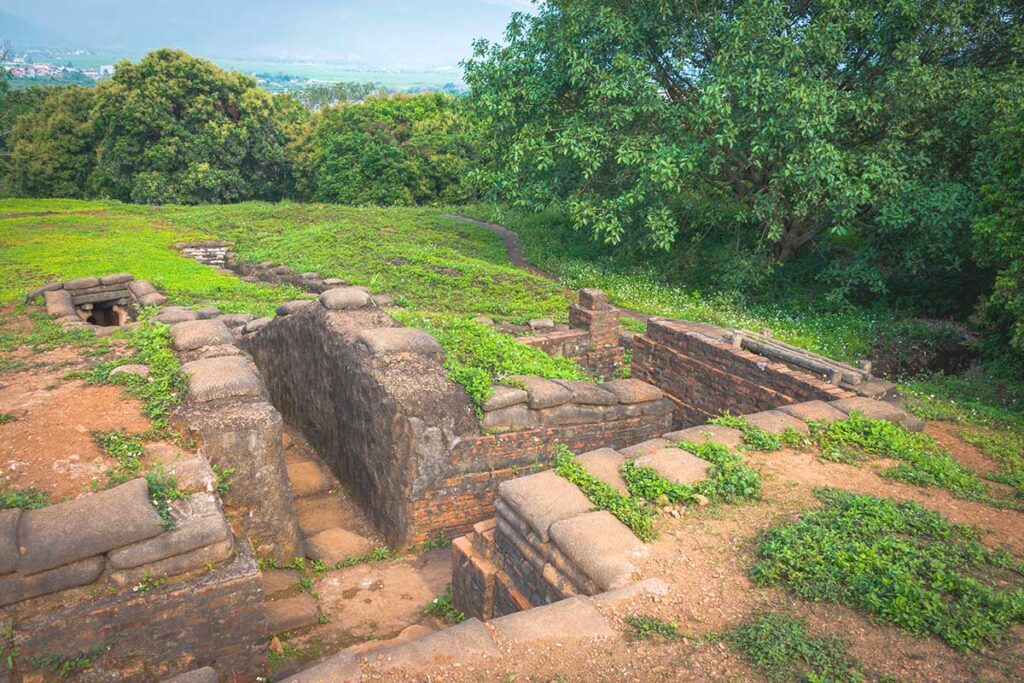
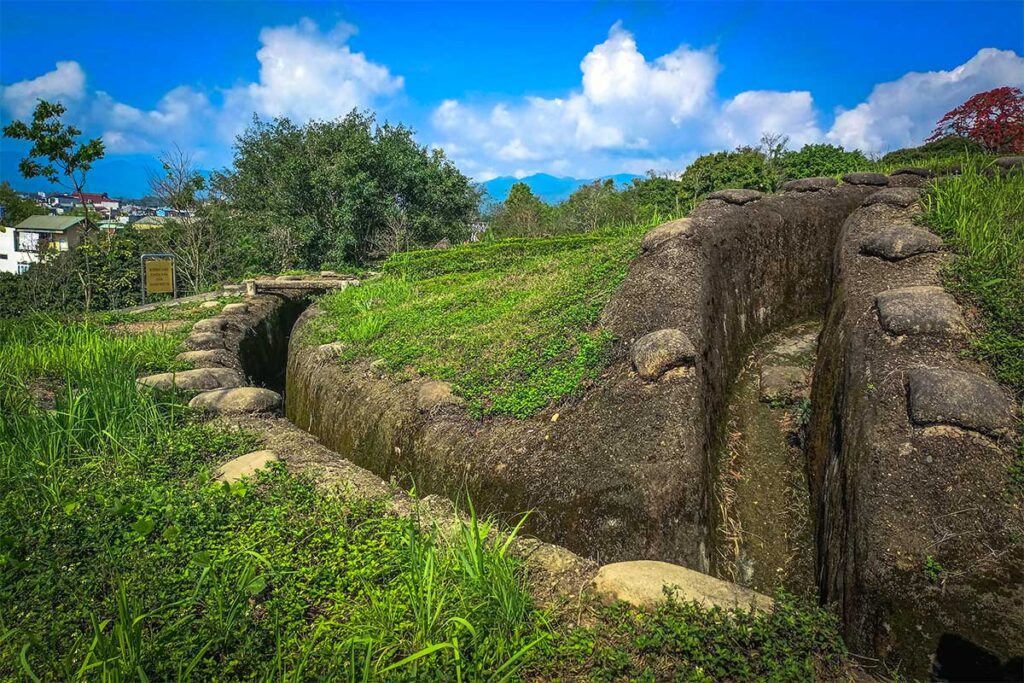
You can explore a network of recreated and original trenches snaking across the hill. Some are French-built, others dug by the Viet Minh during the siege. They offer a close-up look at the kind of terrain and conditions soldiers endured for weeks.
2. Crater from the 960 kg Mine
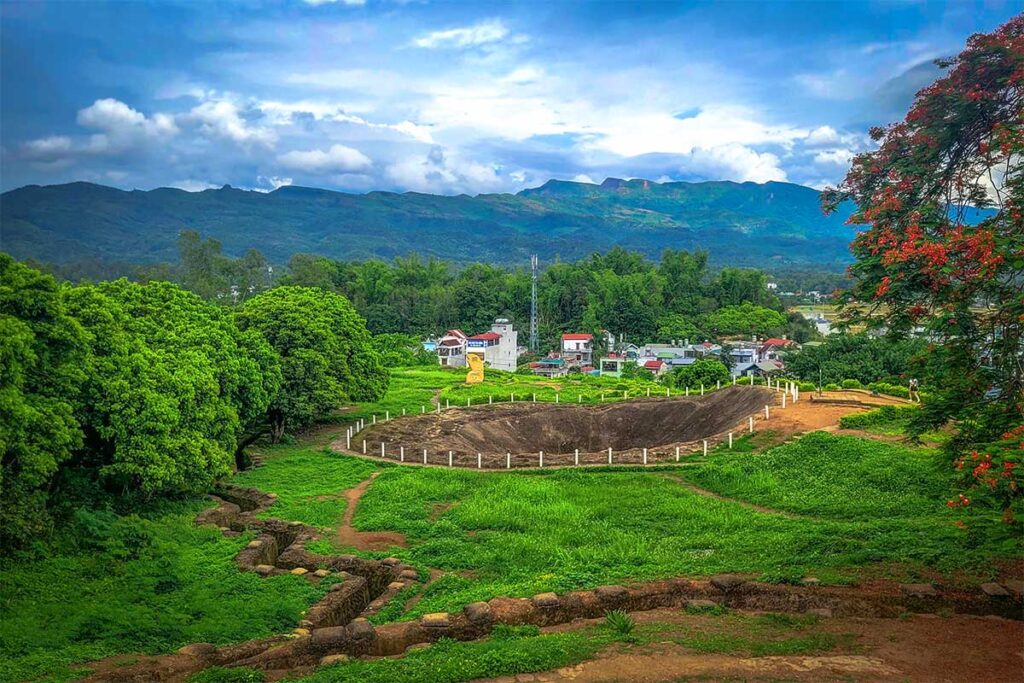
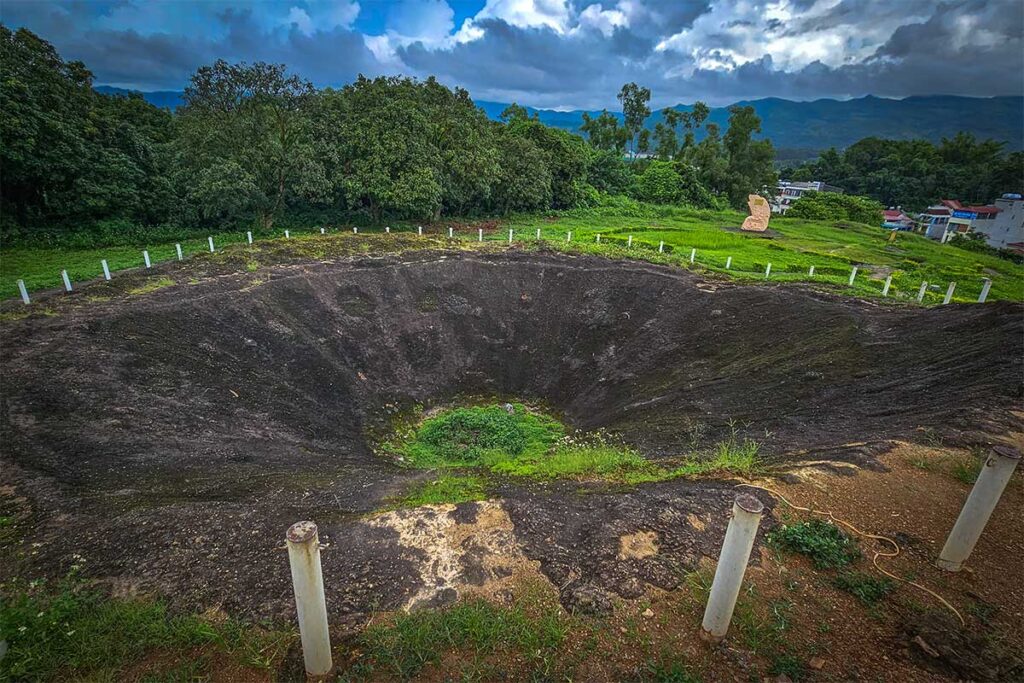
Near the summit is a large crater left by the Vietnamese mine explosion that helped breach the hill’s defenses. It’s one of the most striking features on-site and a powerful reminder of the tactics used during the final assault.
3. Tanks & War Relics
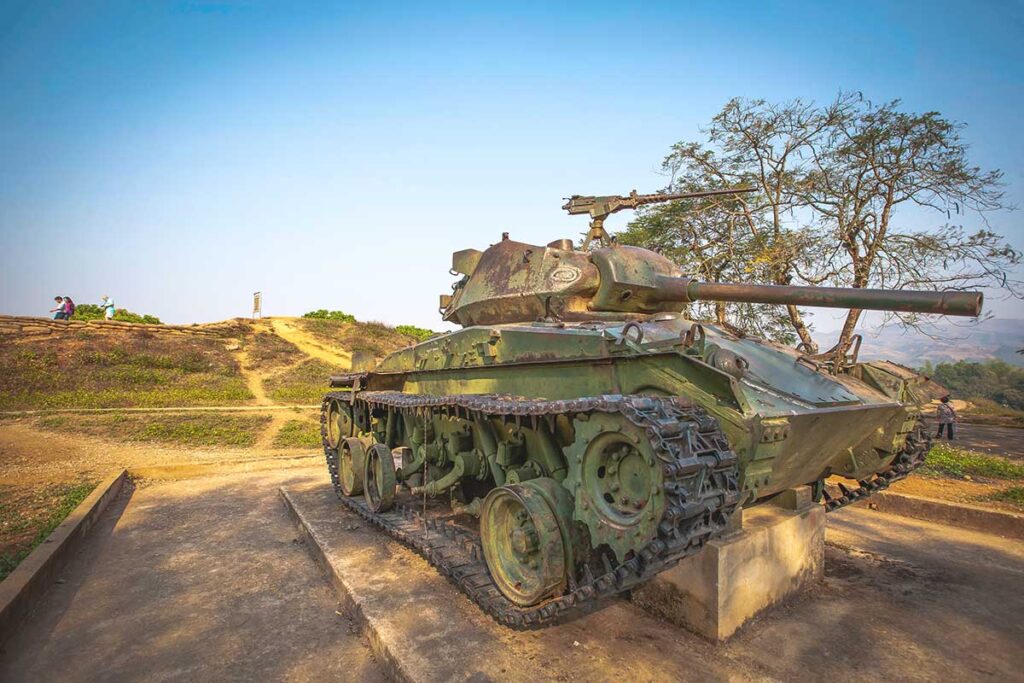
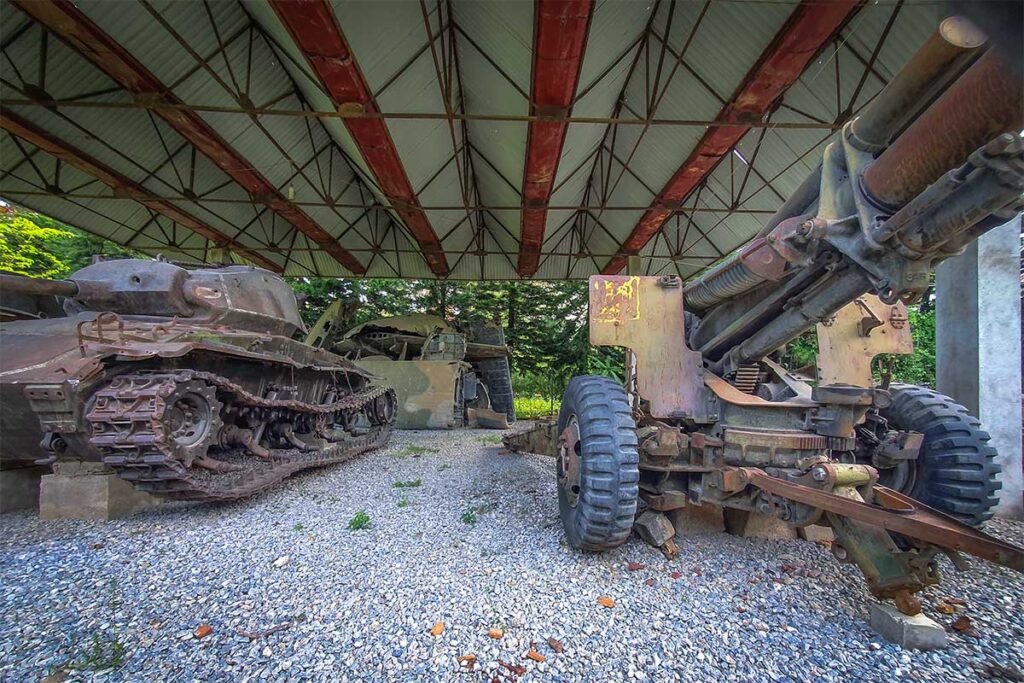
Atop the hill stands a preserved French tank, now weathered and silent. Scattered throughout the site are statues of Vietnamese soldiers and small displays of other wartime remnants. These add a visual layer to the historical story.
4. Memorial areas & Cemetery
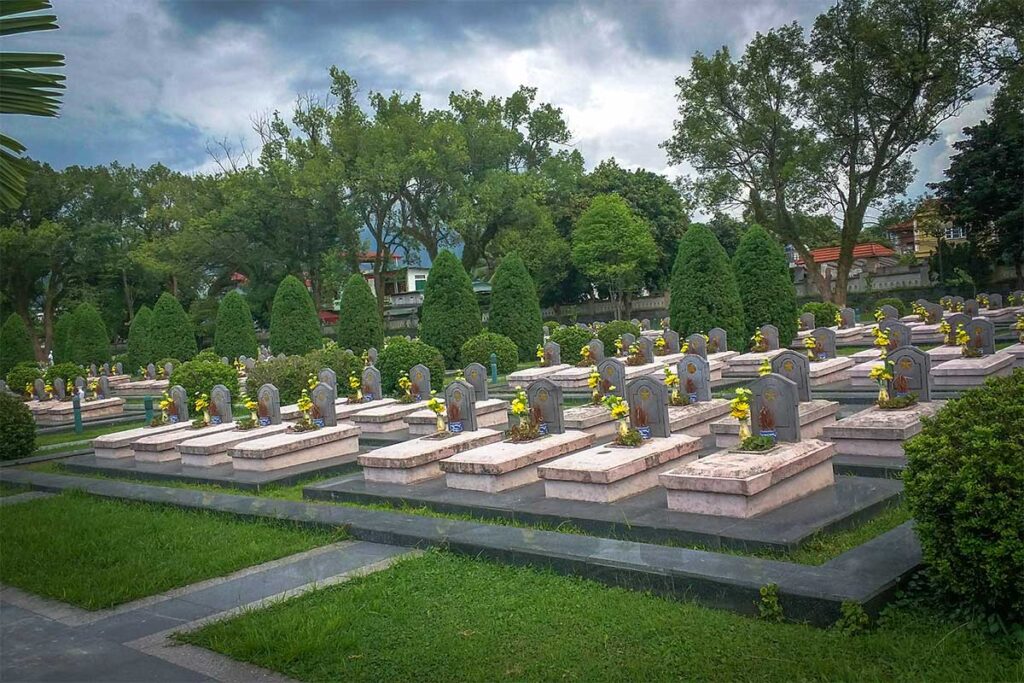
Nearby, you’ll find memorial stones and graves honoring the fallen Vietnamese soldiers. Though modest, these areas are treated with quiet respect by visitors and locals alike.
5. Panoramic view
From the summit, you get a wide view over Muong Thanh Valley—once the heart of the French base. It’s a peaceful contrast to the site’s violent history and helps put the entire battle into perspective.
Visiting Dien Bien Phu Victory Museum
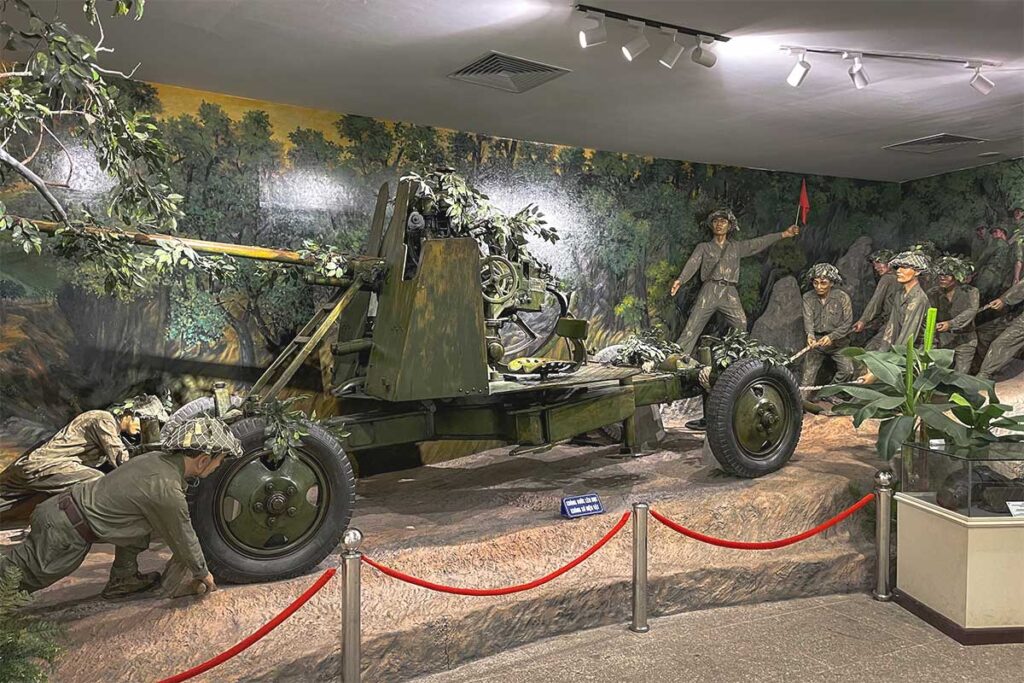
Just across the road from A1 Hill, the Dien Bien Phu Victory Museum is the best place to start your visit. It provides important background on the 1954 battle, with exhibits including weapons, photographs, strategic maps, and even a recreation of General de Castries’ underground bunker. Visiting the museum first helps put the events at A1 Hill—and the wider battlefield—into context.
For full details, see our complete guide to the Dien Bien Phu Victory Museum.
Visiting information & Practical tips
Opening times
Open daily from around 07:30 to 17:00.
Entrance fee
Ticket costs 20,000 VND per person.
Location
A1 Hill is located in the center of Dien Bien Phu, directly across from the Victory Museum.
How to get there
Easily accessible by foot, taxi, or motorbike from most places in town. Combine it with a visit to the nearby museum and cemetery for a half-day loop.
→ Read our full guide on how to get to Dien Bien Phu from Hanoi for more travel tips.
Weather and terrain
The hill can get muddy and slippery during or after rain, especially on unpaved paths—this is most common from June to September. In contrast, sunny days can be hot and exposed, so bring water, a hat, and sunscreen. Wear proper shoes if you want to explore the trenches.
Combine with nearby sites
The area is compact, so it’s easy to add other important sites such as the Victory Museum, Him Lam Hill, General de Castries’ bunker, and the war cemetery.
→ See our complete guide to the best things to do in Dien Bien Phu.
Is A1 Hill worth visiting?
Yes, if you’re interested in military history or want to understand Vietnam’s long struggle for independence—this is one of the most important battlefields in the country. You’ll get a tangible sense of scale, sacrifice, and strategy.
No, if you’re expecting a polished museum experience with clear signage and paths. Without background knowledge, it may feel like just a hill with ruins.
That said, even casual visitors often find the site surprisingly moving. The preserved trenches, massive crater, and scattered relics make it one of the most powerful places to visit in Dien Bien Phu.
